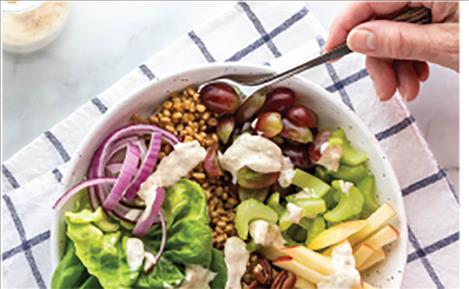Small changes can help combat America’s leading disease, even on a budget
Hey savvy news reader! Thanks for choosing local.
You are now reading
1 of 3 free articles.
For all the death that COVID-19 has brought in the past two years, another perpetual silent killer has loomed like a grim reaper, taking double the amount the lives as the coronavirus.
Heart disease was the leading killer of Americans in 2020, with more than 690,000 deaths in the U.S., according to the Centers for Disease Control. Unfortunately, a vaccine to help fight this disease isn’t on the horizon, but data shows that people can help prevent it through two avenues: diet and exercise.
While these two tasks might require a lot of hard work, there are resources available to help Lake County and Flathead Reservation residents make meaningful change in 2022.
“As a registered dietitian, I recommend people consider small, manageable changes that the whole family can support together for long-term success,” said Brianna Routh, PhD.
Routh is an assistant professor and food & family extension specialist for Montana State University. She had insightful advice on how to cut back on one of heart disease’s leading culprits: salt.
Salt, while flavorful, can cause an increase in blood pressure. Increased blood pressure means more work and stress for the heart and blood vessels, which over time can raise the risk of heart disease and risk of stroke. According to the World Health Organization, most people consume between 9-12 grams of salt per day, which is twice the amount recommended. Approximately one teaspoon is the recommended daily amount.
Where’s the sodium coming from? Around 70 percent comes from processed foods or restaurant foods, according to the CDC.
“I generally recommend that everything is ok in moderation, but here are some small ways you can work to cut back on added salt,” Routh said. “ 1. Fill up more of your plate with fruits and vegetables, 2. Make meals, parts of meals, or snacks from whole ingredients when possible, and 3. Select lower sodium options by looking at the nutrition labels on processed foods.”
Routh had two other recommendations for ditching the pesky substance that seems to sneak its way into practically everything.
“Remove the temptation of adding salt by keeping it off the dinner table so it is out of reach, and remember that not all fruits or veggies have to be fresh to be nutritious,” Routh said. “If you go with canned veggies, remember you can rinse off some of the excess salt or select low sodium versions.”
Though food prices have risen at historic levels in the past year, Routh says people can still be smart with their dollar to make better choices.
“It is possible to make healthy food choices on both a time and money budget,” Routh said “One strategy I use in my own kitchen is buying items I use regularly in bulk and remembering that preserved food is our budget friend. I don’t mean everyone needs to start home canning, although we have lots of resources for how to do this safely.”
Routh said she recommends cooking a couple of big meals on the weekends and saving meal-size portions in the freezer to make sure the leftovers don’t spoil, or pre-cooking ingredients that can easily be added.
“Frozen or canned options are often lower cost and long-lasting ways to get a variety of nutrients into your meals too from frozen fruits to canned veggies that may be more expensive out of season,” Routh said. “Even lower-cost alternative proteins like canned tuna or beans can mix up a quick meal. When buying preserved alternatives to fresh products, remember to look for low sodium or no sugar added options so you can bring your own flavors to a dish without the unnecessary additions.”
There are some other benefits that come from reducing sodium intake.
“Sodium intake is also associated with calorie intake, so if you are cutting back sodium, you will likely cut back overall calories intake and increase consumption of more nutrient-dense foods with other beneficial health properties,” Routh said.” I.e., if you eat carrot sticks instead of French fries, your body will see the benefits in multiple ways.”
Routh said the Montana State University Extension Office also has many resources to help Flathead Reservation residents. The Buy Eat Live Better Program offers both in-person and online classes, as well as recipes and resources for healthier living. The courses are specifically tailored for lower-income individuals.
For more information, visit https://www.facebook.com/MSU.FREO/. Following the MSU Extension Office-Flathead Reservation on Facebook is also recommended.
People can also visit https://www.myplate.gov/eat-healthy/healthy-eating-budget/shop-smart for recommendations on eating a healthy, balanced diet.
















